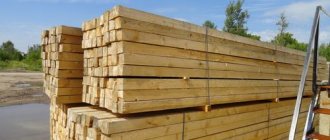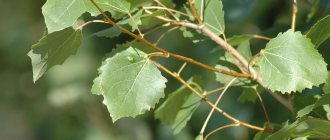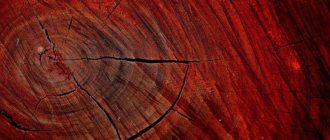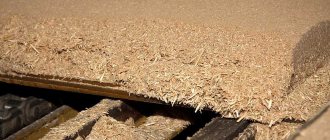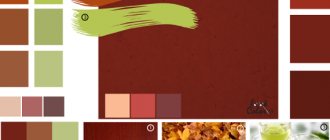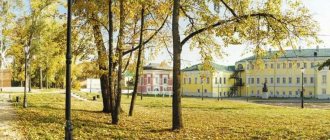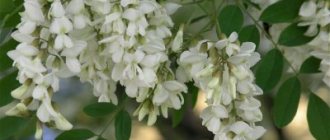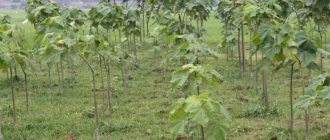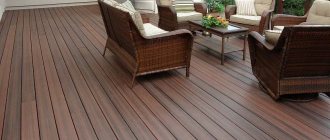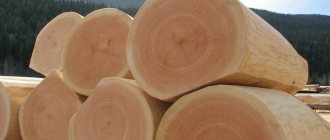Only at the specialized larch warehouse “Les-Pro” the best prices for the following products:
- Oil for external and internal works
- Fasteners
- Floor board
- Planken beveled
- Planken straight
- Lining calm
See offers in our store.
Our prices may interest you! Softwoods usually include conifers. They grow faster and have less density. Therefore, the material is easier to process, costs less and is widely used for industrial purposes. However, among hardwoods there are also soft varieties that are used to make veneer, paper, etc.
Coniferous wood
Today, in industrial and residential construction, frames are often needed, which are divided into two types - permanent and temporary. In addition, it is necessary to create floors, rafters, scaffolding and scaffolding. For these types of structures, lumber from coniferous trees is often used, which is explained by several reasons:
• Coniferous trees grow both in the Russian Federation and throughout the world. • Coniferous trees grow in a relatively short time, so the rate of timber harvesting is also accelerated. • Low-cost lumber from coniferous trees. • The bending strength of such trees reaches 74-79 MPa.
Pine and spruce are resistant to rotting processes and the negative effects of insects. However, there are differences between these types of trees.
Spruce
Spruce has a light white color. Every 20-30 cm there are small knots on its surface. The resin content of the lumber is minimal, the texture of the wood fibers is fine. There are “pockets” in the fibers where resin accumulates, flowing out during heating of the lumber.
There are small holes in the wood structure, since spruce is a favorite “food” for bark beetles.
Pine
This tree has a yellow-brown color and large fibers. Every 60-100 cm there are knots on the surface of the pine tree.
The weight of pine is greater than that of spruce, since its saturation with resin is higher.
Larch
The maximum bending strength of larch is 97 MPa.
In addition, if larch wood is in water, it becomes stone. In appearance it cannot be distinguished from spruce, but the latter weighs half as much.
Features when processing different types of wood on a CNC machine
Pine
Pine is least suitable for processing on a CNC milling machine. It contains a lot of resin, and the pile will cause difficulties during milling - there will be a lot of burrs and irregularities even with a small amount of material removed.
Nut
It is perfect for making small patterns, since its structure is very dense and contains a minimum of lint, so there will be practically no burrs. For this material, the accuracy of machine positioning is more important than ever, so that small patterns are as accurate and even as possible.
Maple and Ash
A hard wood with a distinct grain pattern, well suited for 3D and 2D machining and requires a spindle power of 3 kW. More suitable for making large crafts; they are quite difficult and take a long time to engrave, but the result will be impressive. Maple will have less lint.
Beech
It produces very clear 3D images, it does not flake, and can be milled both along and across the fibers. The optimal spindle is 3 kW (golden mean). It is possible on more powerful spindles, but the equipment is more expensive. At 1.5 square meters it will take a long time (but it’s also possible).
Birch
The wood is hard, but very fringed, additional processing needs to be done (for the rest, see the same as for Ash)
Pear
Very good 3D processing from it, you don’t even need to sand it. The composition is the same as a nut.
Alder
Soft fragile, very well processed 2D. 3D is not very good, because some elements may come off.
Oak
Similar to ash, maple and BEECH, but it is difficult to do 3D with it (if not large), because it chips along the grain
Deciduous hardwoods
These include trees such as oak, maple, birch or ash. They are used less frequently in construction. Birch has greater bending strength compared to pine (99 MPa). Additionally, birch wood is lighter and more resistant to various damage. Birch bars are often used to make the handles of various tools. It has also found its application in the construction of frames for upholstered furniture. Birch lumber has a light white hue.
Oak wood is very dense (800 kg/m3) and hard compared to other species. Due to these characteristics, oak is often used in industry. Oak wood is actively used to create decorative interior elements, a variety of musical instruments, as well as luxury expensive furniture.
Oak lumber comes in a variety of colors - from dark brown to light shades. The cost of such wood is higher compared to pine, since the growth period of oak is much longer (forest resources are renewed much longer), and it also has unique performance characteristics.
Birch
Birch is one of the hardest hardwoods, with yellow and white tones. White birch has a lighter color and is similar in appearance to maple. Yellow birch is pale yellow in color with a reddish-brown tinge in the heartwood. Both types of birch are easy to process and not as expensive as other hardwoods.
One thing to watch out for when working with birch is that it can be difficult to stain because the wood can become mottled. Therefore, birch is best for projects where you only plan to varnish. Birch is commonly used to make high quality furniture, toys and toothpicks.
Deciduous softwood trees
These include aspen, linden and alder. It is not difficult to process such wood manually, as a result of which it is often used for wood carving and creating panels.
Lumber from deciduous softwood trees is practically not used in the construction of various structures, since such material cannot boast of special strength and reliability indicators.
As for linden, it is often used in the construction of bathhouses and fences.
Pine
Pine is a type of softwood that is very easy to work with. It is easy to cut and drill . Pine usually has a light yellow coloration that can really brighten up any interior. Once treated, pine wood is very easy to stain if you want to give it a different tone. But the softness of pine is also its disadvantage, which leads to dents and scratches.
Pine is generally intended for indoor use unless it has been treated for outdoor use. It is widely known as one of the best woods for beginning woodworkers.
Areas of application of valuable wood species
The main characteristics that distinguish valuable wood species are hardness and density. Also, expensive options have their own unique texture, as well as a unique pattern. They look very attractive in all rooms of not only country houses, but also modern city apartments. The value of wood is determined by the total number of trees that remain at the moment.
In Russia, valuable wood species are found much more often when compared with other large countries. Each variety has a beautiful appearance, as well as its own individual characteristics.
Types of valuable wood species and their areas of application
1. Karelian birch has a unique pattern that looks like natural marble. This type is used only for the production of furniture or small decorative elements.
2. One of the most popular valuable species is cherry due to the color of the wood. Since our country has a favorable climate for it, it cannot be called rare. Cherry gained popularity due to its softness, as well as ease of processing and polishing. Musical instruments and various decorative accessories are usually made from it.
3. Oak is a very hard wood. It retains all its quality characteristics, properties and attractive appearance for a service life of many years. Bog oak, which has been in water for a long time, is very valuable. This material can be used not only in the production of furniture, but also as a building material. Very often you can find the finishing of external facades made of oak. Deformations in the form of cracks do not appear on it when exposed to external factors for a long time.
4. Siberian larch wins in terms of density. It is unique with a beautiful pattern on the cut. Parquet is often produced from this breed.
5. Maple has very high hardness levels and surpasses many valuable wood species in this parameter. This variety, after processing, has an almost white tint, which attracts attention. Some specimens can be found yellow or pink. When drying, the wood may become covered with defects in the form of cracks. Furniture items are mainly made from maple.
6. Juniper has a very beautiful cut, the texture of which can contain both stripes and waves. A special feature of juniper is that the wood does not swell when placed in water. Used in the production of barrels, as well as some household items.
7. White acacia is a wood with a yellow tint that begins to darken after a while. Manufacturers use it as a raw material for the manufacture of furniture, as well as parquet boards.
8. Cedar is a very valuable species, which has an unusual texture and unique pattern. The wood is very soft, which makes it pliable when processed. Cedar is used for interior decoration of various premises, as well as yachts.
All of the above tree species grow in Russia. Valuable tropical wood varieties are primarily native to Brazil, Africa and India. Extracting this raw material is quite problematic. Wood has unique quality characteristics, as well as appearance.
Tropical types of valuable wood species
Of the topical species, the most common are rosewood, wenge, zebrawood, ebony, abashi, and acaju. This wood is used for the manufacture of musical instruments, expensive boxes and other decorative items, as a finishing material for baths and saunas, as well as the interior of expensive cars.
Valuable and rare types of wood are used only for finishing expensive luxury interiors, as well as for making exclusive products. Due to the fact that wood has good quality characteristics, all elements made from it have a very long service life.
Plywood classification
Plywood is a sheet building material that is made by gluing and pressing an odd number of layers of wood veneer. As a material for construction and finishing work, plywood is perhaps the most popular and in demand. And this is not surprising, because the plywood sheet is characterized by increased strength properties, ease of processing, long service life and affordable cost.
But before you buy plywood, you should familiarize yourself with its classification and choose exactly what you need.
Brands, grades, types of plywood
Plywood, like any material, must meet certain GOST requirements. According to these requirements, plywood is classified depending on the adhesive compositions used, wood species, permissible defects, etc.
Plywood grades (degree of water resistance):
FC – moisture-resistant plywood. In production, an adhesive composition based on urea resins is used. Optimal for interior finishing work;
FSF – plywood with increased water resistance. In production, an adhesive composition based on phenol-formaldehyde resins is used. Optimal for both external and internal finishing works;
FOF or laminated plywood with increased moisture resistance. It is covered with high-strength paper (film), which is thoroughly impregnated with synthetic resin. Optimal for street work, in particular, organizing formwork and construction;
FBA is a non-waterproof plywood.
Plywood varieties:
E (elite) – absolute absence of defects, stains, cracks, etc. on the surface;
First (I) – minimal defects and no more than 3 healthy wormholes per square meter are acceptable;
Second (II) – small defects and no more than 10 healthy wormholes per square meter are acceptable;
Third (III) – non-critical defects and no more than 10 wormholes with a diameter of no more than 6 mm are allowed;
Fourth (IV) - production defects such as oil stains, cracks, metal inclusions and an unlimited number of wormholes are acceptable.
Types of plywood (machined):
NS – no grinding was carried out;
Ш 1 – one-sided grinding;
Ш 2 – double-sided grinding.
Types of plywood (wood species):
Birch - the main advantage is strength. Optimal where increased loads and pressure will be placed on the building material;
Coniferous – the main advantage is durability and light weight;
Combined – the main advantage is the price. Combined plywood is closer in quality to birch, but much cheaper.
Plywood is also divided according to its intended purpose:
- furniture;
- ship;
- construction;
- aviation;
- formwork;
- decorative;
- transport.
In principle, we have examined the main points by which plywood sheets are classified. Be sure to take into account the properties of the material depending on the varieties, brands, etc., in order not to make a mistake in your choice.
By analogy with plywood, there are classifications of other types of engineered wood, such as MDF, chipboard, OSB and others. Before buying this or that material, be sure to find out its properties. There are types that are completely unsuitable for CNC processing, or their processing is extremely expensive due to the addition of various additives, such as quartz sand.
Some more tables
And finally, another table of popular wood species according to Yank (kgf/mm²)
| Wood species | Hardness | Density | Region of growth |
| Acacia | 7.1 kgf/mm² | 800 kg/m³ | North America |
| Birch (Betula) | 3.3 kgf/mm² | 650 kg/m³ | Europe |
| Beech (Buche) | 3.8 kgf/mm² | 670 kg/m³ | North hemisphere |
| Cherry | 3.6 kgf/mm² | 610 kg/m³ | Europe, Asia, America |
| Hornbeam (Carpinus) | 3.5 kgf/mm² | 750 kg/m³ | South of Russia |
| Oak | 3.8 kgf/mm² | 700 kg/m³ | Europe and North America |
| Spruce | 2.3 kgf/mm² | 450 kg/m³ | North hemisphere |
| Maple | 4.8 kgf/mm² | 720 kg/m³ | North America and Europe |
| Larch (Larche) | 3.1 kgf/mm² | 660 kg/m³ | Asia, Europe, America |
| Olive | 6.0 kgf/mm² | 900 kg/m³ | Southern Europe and Asia |
| Alder (Alnus) | 3.0 kgf/mm² | 525 kg/m³ | Asia, Europe |
| Padouk | 3.8 kgf/mm² | 750 kg/m³ | West Africa |
| Rosewood | 3.5 kgf/mm² | 700 kg/m³ | America and Asia |
| Sapele | 5.0 kgf/mm² | 640 kg/m³ | Africa |
| Pine | 2.6 kgf/mm² | 520 kg/m³ | Almost everywhere |
| Teak | 3.6 kgf/mm² | 670 kg/m³ | Laos and Thailand |
| Cherry (Prunus) | 3.5 kgf/mm² | 600 kg/m³ | Europe and Asia |
| Ebony | 8.0 kgf/mm² | 1050 kg/m³ | Tropics of Asia and Africa |
| Ash | 4.1 kgf/mm² | 700 kg/m³ | Europe |
Features of preparation
Choosing wood is the initial stage. After the master has decided on the breed, he will need to prepare the material. This measure is necessary in order to prevent early damage to the product and deformation. How to prepare wood for carving, what methods exist?
The main method is drying. This procedure helps remove excess moisture that accumulates in the wood. It is optimal if the material is dried in fresh air. It is important to reduce humidity to a level of 15–20%. The drying procedure itself can take a long time - several months if the workpieces are large.
As soon as the humidity reaches the required levels, the wood is brought into the room (away from heating devices). This is necessary in order to further dry the fibers of the material. It is advisable that the moisture content in the workpiece does not exceed 8–10%.
How to prepare wood for carving using alternative methods? Masters can use the digestion method. This method is suitable for preparing small-sized workpieces. To do this, they are placed in boiling water, boiled over low heat for several hours. This procedure helps to quickly and effectively eliminate intracellular moisture in the fibers of the material. After such heat treatment, the workpieces must be dried for a week (on average).
If you don’t know what kind of wood is suitable for carving with chisels, or how to properly prepare the material, but at the same time you want to become the owner of original products, the craftsmen will help. Our specialists are experts in the production of unique carved furniture, souvenirs, and figurines that connoisseurs of exclusive items can order.
